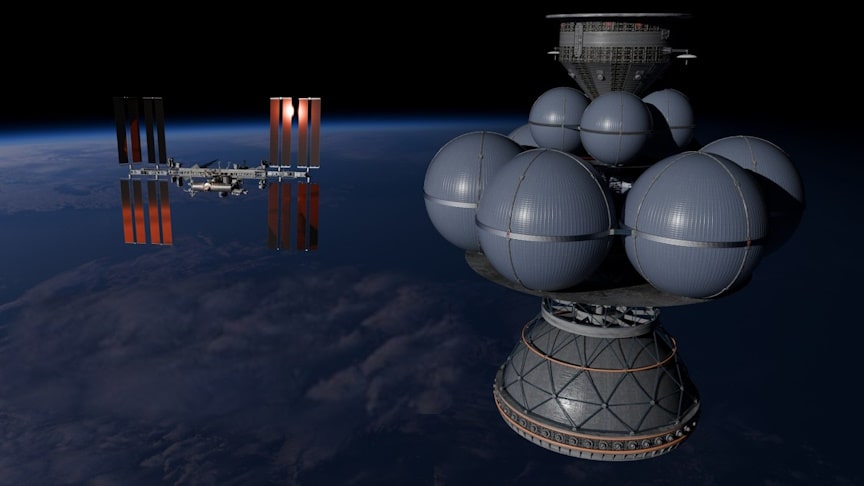Project Daedalus (named after Daedalus, the Greek mythological designer who crafted wings for human flight) was a study conducted between 1973 and 1978 by the British Interplanetary Society to design a plausible uncrewed interstellar probe. Intended mainly as a scientific probe, the design criteria specified that the spacecraft had to use existing or near-future technology and had to be able to reach its destination within a human lifetime.
source.image: Hazegrayart
Alan Bond led a team of scientists and engineers who proposed using a fusion rocket to reach Barnard’s Star 5.9 light years away. The trip was estimated to take 50 years, but the design was required to be flexible enough that it could be sent to any other target star. Daedalus would be constructed in Earth orbit and have an initial mass of 54,000 tonnes including 50,000 tonnes of fuel and 500 tonnes of scientific payload. Daedalus was to be a two-stage spacecraft.
The first stage would operate for two years, taking the spacecraft to 7.1% of light speed (0.071 c), and then after it was jettisoned, the second stage would fire for 1.8 years, taking the spacecraft up to about 12% of light speed (0.12 c), before being shut down for a 46-year cruise period.
Advertisement
Due to the extreme temperature range of operation required, from near absolute zero to 1600 K, the engine bells and support structure would be made of molybdenum alloyed with titanium, zirconium, and carbon, which retains strength even at cryogenic temperatures. Daedalus would be propelled by a fusion rocket using pellets of a deuterium/helium-3 mix that would be ignited in the reaction chamber by inertial confinement using electron beams. The electron beam system would be powered by a set of induction coils trapping energy from the plasma exhaust stream.











